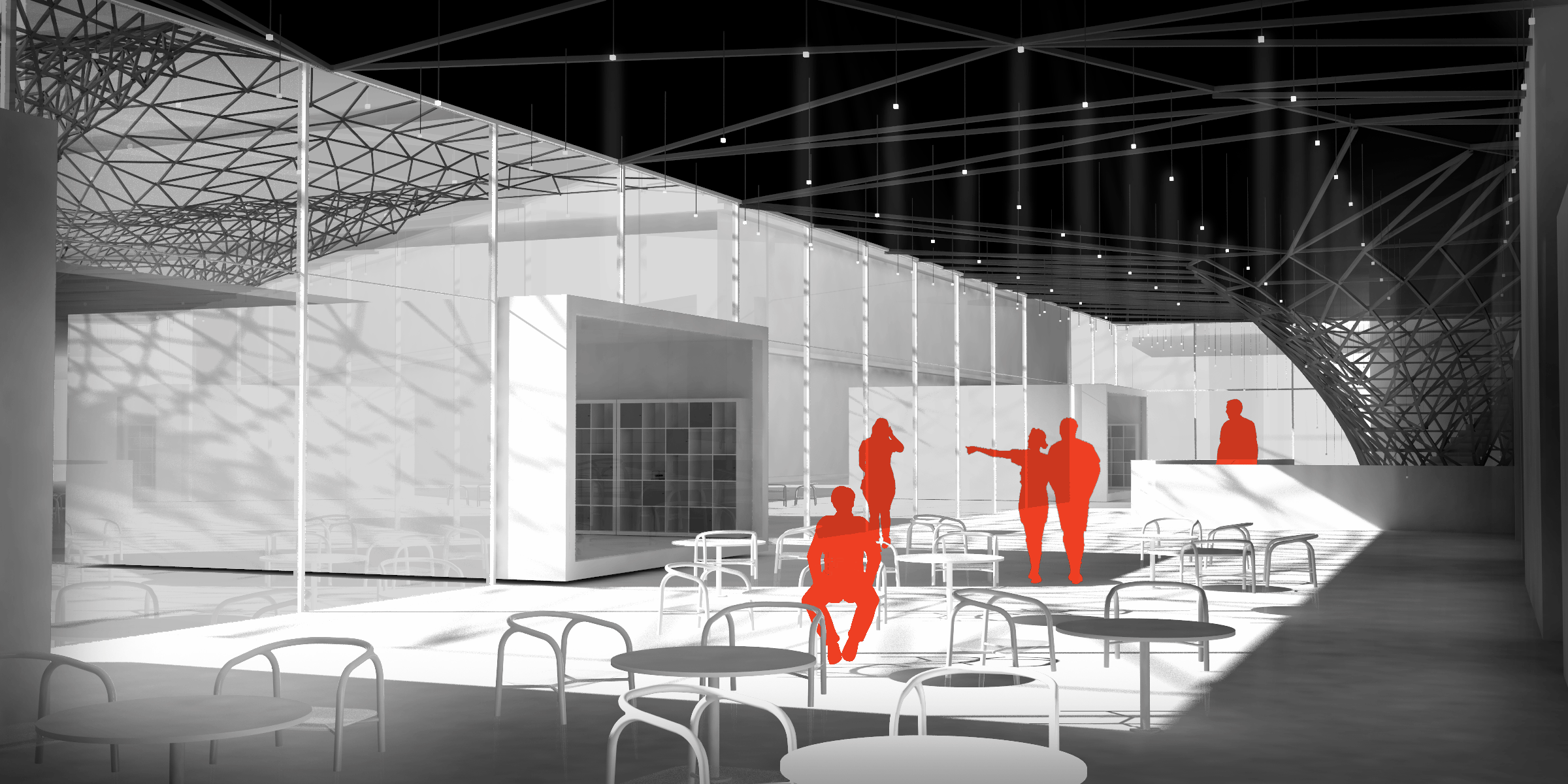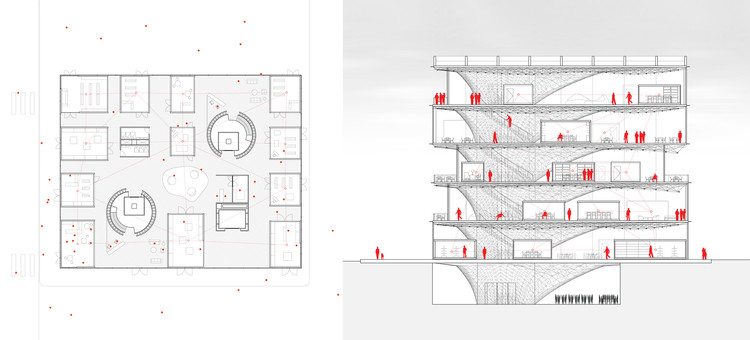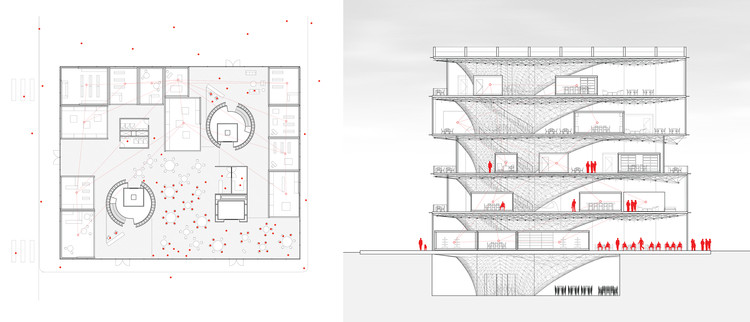
As self-driven cars are being introduced to our city streets and tech companies have expanded their influence far beyond the boundaries of our computer and smartphone displays, a new generation of architects are charged with imagining how to employ the technology of tomorrow in ways that will advance and improve the world’s built environments. With autonomous transportation, virtual and augmented reality and artificial intelligence promising unprecedented tools for revolutionizing human infrastructure in a future that no longer feels particularly distant, present-day data gathering and analysis capabilities have already transformed our ability to understand trends on an unforeseen scale.
Taking full advantage of modern data science capabilities and semi-automated robotic technology currently deployed in factory settings around the world, Masters candidate Stanislas Chaillou from the Harvard GSD imagines how today’s new tech could help realize the longtime architectural ambition of creating flexible buildings capable of adapting to variable uses.
Inspired by the Japanese Metabolist movement of the 20th century, Chaillou’s project entitled “Metabolism(S): Flexibility in the Century“ unpacks the modern conditions that make spatial flexibility a realistic ambition, and he demonstrates this potential with a proposed design for The Synaptic Building—a theoretical mixed-use urban facility designed to actively adjust its spatial arrangement to suit usage patterns that change at different times of the day.



In his exploration of architectural Metabolism, Chaillou explains how modern developments have finally brought the movement’s goals within reach, citing the ability of modern data science to model and predict usage patterns, how consumer attitudes have grown to welcome bold deployments of automated technology and the development of semi-autonomous robotic tech that enables real-time rearrangement of space.

Based on developments in data science, resources like New York City’s open data platform and Google’s Popular Times feature show how traffic and occupancy trends can be accurately monitored, and this information can be used to predict how demand for different types of space changes on an hour-by-hour basis. In The Synaptic Building, machine learning algorithms use this occupancy data to create a schedule for how the building arranges its spaces: on the ground floor, motorized retail units organize themselves to a grid in time for business hours to begin, spread themselves out to make room for restaurant seating during mealtimes, and then retract to a compact arrangement for overnight storage after the building closes. With online commerce solutions relieving the need to carry extensive inventory, these retail units are each small enough to be powered by robotic electric motors programmed to follow a specific movement pattern. This capability is currently used by Amazon to maximize efficiency by moving shelving units autonomously around their warehouses.

In this scheme, retail stores, conference rooms, and other contained spatial units are free to scurry into new positions throughout the day thanks to the open, column-free floor plans created by The Synaptic Building’s unique structure. Designed to have a minimal footprint while containing vertical circulation areas and all fixed services (like plumbing, wiring, HVAC, and LED lighting), the structure relies on steel vaults that rise and expand like branches of a tree to support each subsequent stacked floor plate. Chaillou explains that this design allows new floors to be added to the top of the building over time as demand requires.

This idea of the building growing in height connects Chaillou’s ideas directly to the ideas of Metabolism. Partially realized in buildings like the Nagakin Capsule Tower by Kisho Kurokawa but never deployed with complete success, the ideals of Metabolism revolved around enabling buildings to expand over time in a manner that would emulate organic growth. By considering how structures could accommodate elements being added, expanded or replaced when necessary, Metabolism insisted that buildings take a proactive approach to their life cycle. However, the few built examples of Metabolism ultimately failed to develop through their lifespan as they were intended to.

While Chaillou characterizes The Synaptic Building as a modern example of Metabolism, the key method by which it achieves architectural flexibility ultimately has more to do with the ever-changing nature of its floor plan arrangements than its potential to grow by adding additional floor plates. In this sense, the idea is more related to the open floor plan flexibility strategies of Gerrit Rietveld’s Schröder House or the Centre Pompidou by Renzo Piano and Richard Rogers, which are based on the idea of relocating or removing walls and partitions (as well as the service functions they support) to create as much open floor space as possible, which can then then be put to use as desired.

But as progressive as The Synaptic Building may be, Chaillou’s greater ambitions in proposing a technology-based approach to unprecedented architectural flexibility focus on the role that architects must play in the design and realization of such an active program. “Architects will soon have to surpass their current set of skills,” he says, “to understand the future users’ behavioral patterns and cycles and adapt their building conception accordingly.” By taking responsibility for more than just the structure, aesthetics and built properties of a project and considering the details of how a building functions day-to-day throughout its life cycle, he envisions a future in which architecture would be responsible for assessing, responding to and ultimately determining the functional relationship between humanity and the institutions we interact with in every facet of our daily lives.











